
Hãy nhập câu hỏi của bạn vào đây, nếu là tài khoản VIP, bạn sẽ được ưu tiên trả lời.


bạn học sách mới hả nếu thế bạn gõ sachmem.vn mà học nhé có tất cả các bài trong sách giáo khoa và sách bài tập đó
COMMUNICATION
Extra vocabulary
+myth: sự hoang đường +sleeping in: ngủ nướng
+sushi: món sushi +vegetarians: người ăn kiêng
+vitamins: chất dinh dưỡng
Exercise 1:
1. People who smile more are happier, and they live longer. (fact)
2. Sleeping in at the weekend helps you recover from a busy week. (myth)
3. Eat more fresh fish, like sushi, and you will be healthier. (fact)
4. Sitting to close to the TV hurts your eyes. (fact)
5. Pick up food you drop quickly, and it's safe to eat. (myth)
6. Vegetarians don't get enough vitamins in their food. (myth)
Exercise 2: Nghe radio nói những sự thất hoặc sự hoang đường về sức khoẻ và kiểm tra những câu trả lời của bạn ở bài tập 1.

vocabulary
Bài 1 là ngta cho mjh câu hỏi a, b, c, d rồi thì giờ mjh làm câu trả lời lun
A)you have a sunburn
B)you have a spots
C)you put on weight
D)you have a stomachache
E)you have a flu
Bài 2
1 spots
2 put on weight
3 sunburn
4 stomachache
5 flu
Bài 3
1.......less..........
2.......more........
3.......more.........
4......less.........
5 .....less.....
6.......more......
Bài 4
1I want to eat some junk food, but I am putting on weight
2) I don't want to be tired tomorrow, so I should go to bed early
3)I have a temperature, and I feel tired
4)I can ểcise every morning
Còn bài 5 bài 6 thì đọc thui có gì ko hiểu trog bài thì hỏi mjh nha
Tick cho mjh nha
Thay vì mấy bn soạn cho bn chép lại thì bn tự lm đại đại đi.Đỡ mất thời gian.

LESSON PLAN
Period 14: UNIT 2: HEALTH
Lesson 6: SKILLS 2
Date of preparation : September 13th, 2014
Date of teaching : September 15th, 2014
Classes : 7A1
I. Aims and Objectives:
+ Language content:
- To help students review some words about health.
- To help students listen to get specific information about health problems and advice, and
- To make them master how to write a reply giving advice to someone with a health problem.
+ Language function: To make students know how to give and write a reply giving advice to someone with a health problem.
+ Educational aim: To make students stay healthy.
II. Language Contents:
a- Vocabulary: Vocabulary: health problems
b- Structures: a paragraph
III. Techniques: pairwork, groupwork, individual work, question-answer, brainstorm
IV. Teaching aids: pictures, cassette, tape/ CD
V. Procedures:
1- Stabilization: (1m)
a- Warm up: Greeting.
b- Checking absence: Who’s absent today?
2- Checking up the previous knowledge: (5ms)
Questions:
Key:
Marks:
1. Write new words: chế độ ăn kiêng , chuyên gia ,giữ dáng , lời khuyên
2. Listen and answer the questions:
a. What is a calorie ?
b. Where do you get calories ?
c. What is a healthy number of calories per day ?
d. Which activity uses more calories : walking and sleeping ?
1. Write new words: diet, expert , stay in shape, tip
3. Listen and answer the questions: *Possible answers:
a. A calorie is energy that helps us do our daily activities
b. we get calories from the food we eat
c. between 1.600 to 2.500
d. walking
4ms
6ms
3- New lesson:
Time
Teaching steps
A.LISTENING:
1. Lead-in:
- Give them the Olympic rings and asks them what these represent.
- Brainstorms with Ss as a class different words that come to mind when Ss think of the Olympics.
- Introduces students to the new lesson.
2. Pre- Listening:
Activity 1: Look at the picture below. Discuss the following questions with partner.
- Asks students to have a look at picture and discuss.

3. While- Listening:
Activity 2: Listen to the interview with an ironman. Tick the problems he had as a child.
- Lets students listen twice.
- Asks students to answer (play the tape again) and check.
*Key: sick, allergy
Activity 3: Listen to the interview again. What advice does he give about preparing for event?
- Lets students listen again.
- Asks students to answer (play the tape again) and check.
*Key: Do more exercise, sleep more, eat more fruit/vegetables
Activity 4: Are the following sentences true (T) or false (F)?
- Asks students to do the task individually
- Calls some Ss to give their answers and corrects.
*Key:
1.T, 2. F, 3.F, 4.F, 5T
4. Post- Listening:
Activity 5: Discuss in groups.
- Asks students to discuss in groups about 2minutes.
- Calls some representatives represent their answers.
B. WRITING:
1. Lead-in:
- Gestures and says “ I have a headache. Can you give me an advice?”
- Introduces students to the new lesson.
2. Pre- writing:
- Explains: To give advice you can use:
+ You should….
+You can…
+ It will be good if you…
+Do something more/less…
3. While- writing
Activity 6: Look at Dr. Law’s advice page. Can you match the problems with the answers?
- Asks students to finish the task individually.
- Corrects and gives them the key
1. c, 2.b, 3a
4. Post- writing
Activity 6
-Has Ss work in pairs to do the task.
-Calls some pairs to share their problems and responses with the class.
5. Consolidation :
- Lets sts summarize the content of the lesson
6. Homework:
Grade 7: LESSON PLAN
Period 15: UNIT 2: HEALTH
Lesson 7: LOOKING BACK AND PROJECTS
Date of preparation : September 16th, 2014
Date of teaching : September 18th, 2014
Classes : 7A1
I. Aims and Objectives:
- To help the Ss review words relating to health.
- To help student review imperatives with more and less as well as compound sentences.
+ Language function: Students will be able to talk about health problems, give health advice..
+ Educational aim: To make students know how to stay healthy.
II. Language Contents:
a- Vocabulary: (review)
b- Structures: (review)
III. Techniques: pairwork, groupwork, individual work, question-answer
IV. Teaching aids: pictures, cassette, tape/ CD
V. Procedures:
1- Stabilization: (1m)
a- Warm up: Greeting.
b- Checking absence: Who’s absent today?
2- Checking up the previous knowledge: (5ms)
Questions:
Key:
Marks:
. Listen and answer the questions:
a. What will you do if you have flu?
b. I play computer games a lot and my eyes feel really dry. What should I do?
c. I have some spots. What can I do?
d. What do you do to have good health?
. Listen and answer the questions:
a. Drink more water./ Sleep more
b. You should try to rest your eyes.
c. You should wash your face more.
d. funny.
e. Eat sensibly and do more exercise
10 ms
3- New lessons
A. Vocabulary:
1. Lead-in:
- Holds game: Network: Asks 2 teams to write all health problems
- Introduces the new lesson to students.
2. Pre- practice:
-Reminds Ss of health problems.
3. Controlled- practice:
Activity 1. What health problems do you think each of these people has?
- Ask students to complete this task individually.
- Call students to write the answers on the board.
- Correct the exercise with the whole class
Key: a. sunburn b. spots c. put on weight d. stomachache e. flu
Activity 2: Look at the pictures. Write the health problems below each person.
- Ask students to complete this task individually.
- Correct the exercise with the whole class.
Key: 1. spots 2. put on weight 3. sunburn 4. stomachache/ sick 5. flu
4. Free-Practice:
-Games: “hot seat”
B. Grammar
1. Lead-in:
- Holds game: Network: Asks 2 teams to write all health tips
- Introduces the new lesson to students.
2. Pre- practice:
Structures:
- Reviews :
A.Imperatives with more and less:
-Gives Ss a picture of a fat person

- Asks students a question “What should the boy do if he wants to lose weight?”
*Possible answers: He should eat less. / He should sleep less./ …
- Says:
+Eat less
+Sleep less.
+Eat less junk food.
+Do more exercise.
a. Form:
V + (o) + more/less + (n)
b. Use: We can use the imperative for direct commands, orders or suggestions.
B. * Compound sentences:
-Write the sentence on the board and asks them to draw the form
a. Form:
Simple sentence, + and /or /but /so+ Simple sentence,
b. Use: when we want to join two ideals, we can link two simple sentences to form compound sentences. We can do this using a coordinating conjunction like and ( for addition), or (for choice), but (for contrast), or so (for a result)
3- Controlled-practice:
Activity 3: Complete the health tips.
- Ask students to complete this task individually.
- Correct the exercise with the whole class.
Key: 1. less 2. more 3. more 4. Go outside 5. watch … TV 6. Do … exercise
Activity 4: Draw a line to link the sentences and a coordinator to form meaningful sentences.
- Ask students to complete this task individually.
- Call students to write the answers on the board.
- Correct the exercise with the whole class.
Key:
1. I want to eat some junk food, but I am putting on weight.
2. I don’t want to be tired tomorrow, so I should go to bed early.
3. I have a temperature, and I feel tired.
4. I can exercise every morning, or I can
cycle to school.
Activity 5:
- Has students write the true sentences about them.
4. Free-Practice:
-Games: “shark attack”
C. Communication:
1. Lead-in:
-Asks Ss “ Where will you go if you have a very bad toothache?”
- Introduces the new lesson to students.
2. Pre- practice:
-Reminds Ss of health problems.
3. Controlled- practice:
Activity 5. Role-play.
- Ask students to work in pairs. Each student is the patient and other student is the doctor. Ask
them to choose one of the health problems to role-play a discussion.
Activity 6: Facts or Myths?
- Ask students to complete this task in pairs
- Correct the exercise with the whole class.
4. Free-Practice:
PROJECT:
- Asks students to do a survey about people’s health.
- Asks them to present their results.
5. Consolidation :
- Reminds sts the main ideas of the lesson
6. Homework :

EX2
2.T
3.T
4.F
5.F
EX3
1.NOT TICK
2.TICK
3.TICK
4.NOT TICK
5.TICK
6.TICK
EX4
(1)GROWS FLANTS, FLOWER AND SEM THEM
(2) COOK MEAL AND BRING IT TO STUDENT STREET
(3)REPAIR TABLE ,CHAIRS,CAR IN THE HOUSE
(4)GIVE THE RIDE TO THE ELDERLY PEOPLE
(5)MENTOR THEMTO DO HOMEWORK AND HELP THEM STUDY LESSON
![]()

The Covid-19 coronavirus outbreak is a new illness and scientists are still assessing how it spreads from person to person, but similar viruses tend to spread via cough and sneeze droplets.
When an infected person coughs or sneezes, they release droplets of saliva or mucus. These droplets can fall on people in the vicinity and can be either directly inhaled or picked up on the hands then transferred when someone touches their face, causing infection. For flu, some hospital guidelines define exposure as being within six feet of an infected person who sneezes or coughs for 10 minutes or longer.
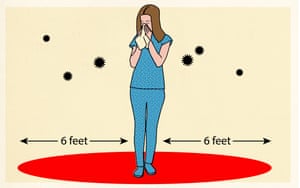
FacebookTwitterPinterest
Stay six feet from infected individuals.
Viruses can also be spread through droplets landing on surfaces such as seats on buses or trains or desks in school. However, whether this is a main transmission route depends on how long viruses survive on surfaces – this can vary from hours to months.
There is anecdotal evidence that the virus can be spread by people before they have symptoms. Some other illnesses such as flu can be passed from one person to another before symptoms occur – but the extent to which this is happening with the new coronavirus is not well understood yet.
How to protect yourself and others
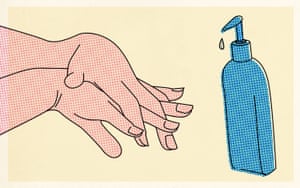
FacebookTwitterPinterest
Wash your hands.
Wash your hands: wet your hands with clean, running water and apply soap. Lather your hands, including the backs, between your fingers, and under your nails and scrub for at least 20 seconds. Rinse.
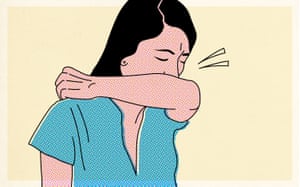
FacebookTwitterPinterest
Cover your mouth.
Cover your mouth and nose with a tissue when you cough or sneeze, then throw the tissue in the bin and wash your hands. If you do not have a tissue to hand, cough or sneeze into your elbow rather than your hands.
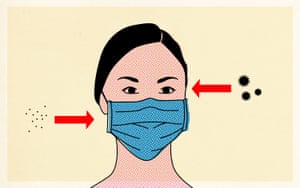
FacebookTwitterPinterest
Face masks offer some protection.
Face masks offer some protection as they block liquid droplets. However, they do not block smaller aerosol parles that can pass through the material of the mask. The masks also leave the eyes exposed and there is evidence that some viruses can infect a person through the eyes.
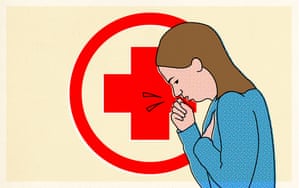
FacebookTwitterPinterest
Seek medical help.
Seek early medical help if you have a fever, cough and difficulty breathing, and share your travel history with healthcare providers.
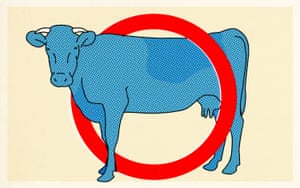
FacebookTwitterPinterest
Avoid live animals.
If visiting live markets in affected areas avoid direct, unprotected contact with live animals and surfaces that have been in contact with animals.
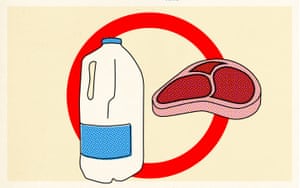
FacebookTwitterPinterest
Avoid raw foods.
If you have returned from an affected area in the last two weeks, stay indoors and avoid contact with other people for 14 days. This means not going to work, school or public areas.
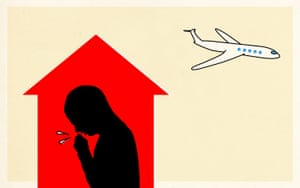
FacebookTwitterPinterest
Seek medical advice before leaving home.
If you have returned from an infected area and develop a high temperature, cough, runny nose, sore throat or difficulty breathing do not leave your home until you have been given advice by a doctor.
In these extraordinary times…
… the Guardian’s editorial independence has never been more important. Because no one sets our agenda, or edits our editor, we can keep delivering trustworthy, fact-checked journalism each and every day. Free from commercial or polial bias, we can report fearlessly on world events and challenge those in power.
In these frightening and uncertain times, the expertise, scientific knowledge and careful judgment in our reporting has never been so vital. No matter how unpredictable the future feels, we will remain with you, delivering high quality news so we can all make crial decisions about our lives, health and security. Together we can find a way through this.
We choose to keep our measured journalism open to everyone around the world, regardless of where they live or what they can afford to pay. We believe every one of us deserves equal access to accurate news and calm explanation. Thanks to your support, we’re able to stay free of a paywall, our reporting available for all.
None of this would be possible without the generosity of readers, who now support our work from 180 countries around the world. You have helped us to keep investigating, disentangling and interrogating. Your support protects our independence, which has never been so crial. We are so grateful.
Hok tốt nha bạn!!!


có thể gửi hình ảnh lên cho mình không???tìm sách lại thì hơi lâu bạn
em phải chụp lên chứ,anh có sách đâu mà biết :v



Ghi bài đó ra, làm ơn ạ.
ko có Unit 14 bn nhá
tính troll mk á